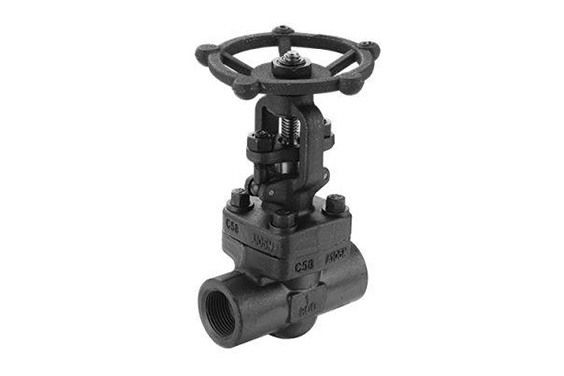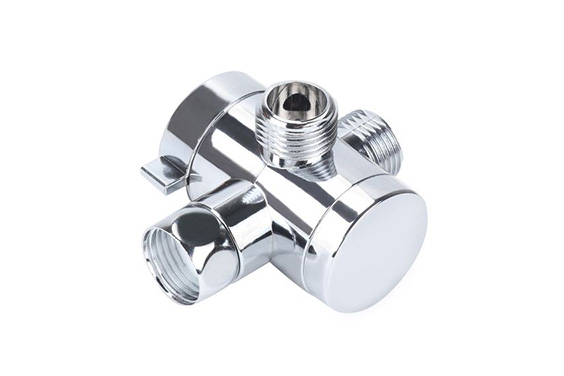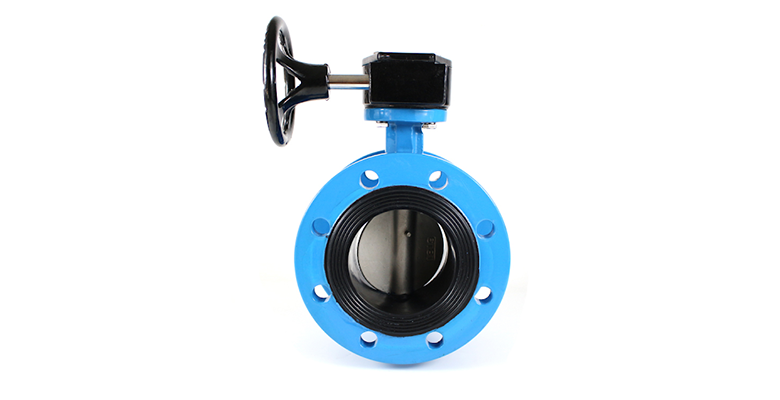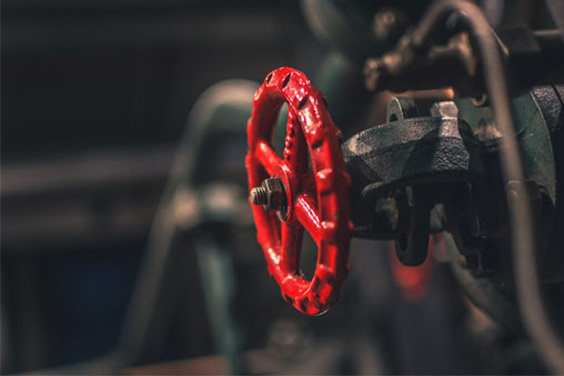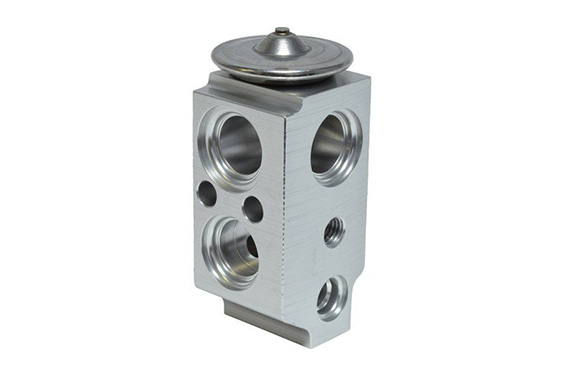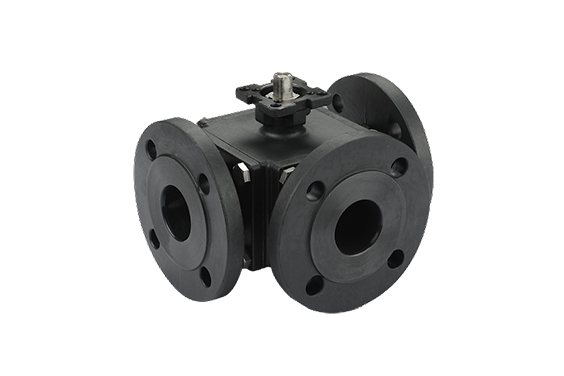A valve forms an important part of the distinct pipeline systems. They are not only used to regulate the flow of liquid but also to control the speed and pressure. The valves used in the pipelines are generally bigger as compared to the pipeline itself and placed more towards the ground level.
Owing to its functions and specifications there are different types of pipeline valves.
What Is A Pipeline Valve?

A pipeline valve is mainly used in various pipeline systems for maintenance purposes. These valves play a major role in the smooth and efficient functioning of the pipelines. The valves are meant for regulating, controlling, and directing the flow of a fluid by opening, closing, or partially creating obstructions in the passage.
Furthermore, it also ensures the safety of the pipes. The valves are mainly installed in the control system. However, it is important to install only high-quality, reliable valves else it might lead to damage as well as leakage in the pipeline system.
Some of the major functions of these valves include:
- Controlling the temperature by controlling the water cooling rates through a cooling line.
- Controlling the flow of concentrated bases or acids through a line.
- Balancing the system by restricting flow.
- Avoiding reversing flow (check valves).
- Automatically ceasing the flow in case of system failure.
How Do Pipeline Valves Work?
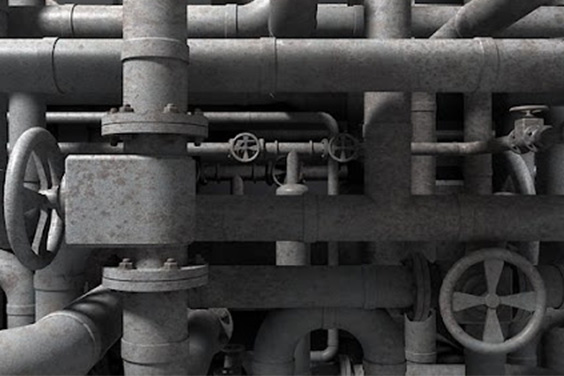
The pipeline valves are mainly placed at specific intervals in the pipeline to control the movement and flow of the liquid. The operation of the valves is mainly dependent upon the position of the disc or rotary in it. While some valves can rotate to and fro, others can rotate either in one specific direction or a maximum in two directions.
In the case of the two-port valves, they can either remain closed to stop the flow of the fluid or open to allow its flow. In certain circumstances, the valve remains partially opened to allow the partial flow of the liquid.
In such two-port valves, the fluid can flow from one port to the other.
Some of oil pipeline valves are operated manually with the help of the handle attached to the stem of the valve. If the handle is half-turned up to 90 degrees, then it is considered the quarter turn valve. When the handle is in a completed circular position to the stem.
Even the actuators can control the functioning of the valve. The actuators are attached to the stem. They enable the valves to work in an automated manner.
Different Types Of Pipeline Valves
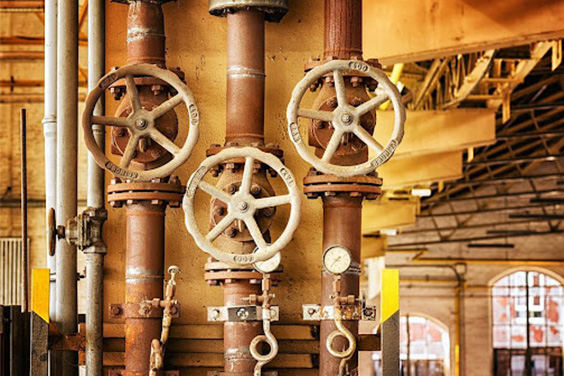
The types of pipeline valves used in different piping systems are selected according to the requirements of the piping system. While some might be used only to control the flow, others might be used to regulate or throttle it.
Different types of valves in pipelines have distinct functionalities and purposes. Some of the most common pipeline valve types have been mentioned below.
1. Gate Valve
Gate valves are linear motion valves that utilize a gate or disk to allow or restrict the liquid flow throughout the piping system. These valves can either be fully opened or fully closed, there is no partial movement. In case of constant flow, the gate or the wedge-shaped disk is completely open and does not obstruct the fluid flow. Moreover, there is a lesser pressure drop while the gate remains open.
For the proper sealing of the gate valve, the disk should be in contact with the surface at an angle of 360 degrees. This prevents the flow of liquid and keeps the valve completely closed. Pipeline gate valves should not be used for regulating purposes. This is because it does not control the fluid flow accurately. The higher flow intensity might often lead to disc erosion and the emission of louder noises.
The pipeline gate valves can be classified according to three different categories: type of disk, types of body bonnet joint, and the types of stem movement.
Types of Gate Valve
The different types of gate valves based on the type of disk include:
- Solid taper wedge
- Split wedge
- Flexible wedge
Based on the body bonnet joint, the different types of gate valves have been mentioned below.
- Bolted bonnet
- Welded bonnet
- Screwed bonnet
- Pressure-seal bonnet
According to the stem movement, the gate valve can be divided into two types
- Rising stem
- Non-rising stem
Advantages of Gate Valve
- The gate valves are mainly available in large sizes
- The main purpose of these valves is as a shut-off valve
- Pipeline gate valves does not require any high maintenance and can be easily disassembled.
- Gate valves are cost-effective and do not require frequent repairs.
- It can be easily used with a metal sheet as they are inherently fire-safe.
- Its bi-directional nature allows the liquid to flow in two directions.
Disadvantages of Gate Valve
- There is a low-pressure limitation
- It consumes a lot of time to open and close.
- There are higher chances of erosion of the seat and disk
- It has poor throttling characteristics
- The gate valve is difficult to repair
- It cannot be used in sanitary applications
Applications for Gate Valves
Due to their convenient features, the gate valves can be used in multiple areas. Some of its applications include fluid services such as steam, lubricant oil, fuel gas, and many more. It can also be used in powder products.
Why can they be used in the pipeline?
Gate valves cannot help in the partial closing or opening. Thus, these valves initiate complete fluid flow in the pipelines. Moreover, there is a minimum pressure drop if the gate valve is installed in the pipes. They are mainly installed in the pipelines as the isolating valves and do not require high maintenance. Furthermore, its slow mechanisms prevent any water hammer effects.
2. Globe Valve
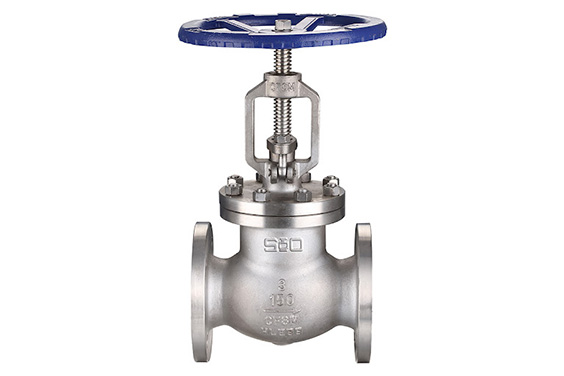
The main purposes of the globe valves are controlling, restricting, and allowing the liquid flow. T is mainly utilized in pipeline systems where leakage and flow control are necessary factors. These valves consist of the disc that moves in at a 90-degree angle to the seat to open and close the valve. The appropriate space created between the disk and the seat while closing the valve makes it appropriate for regulating the flow.
There is a lower chance of leakage in the globe valves as compared to the other valves. One of the main reasons is the perpendicular angle between the disc and the seat of the valve. The disc of the globe valve closes in the opposite direction or the same direction as the liquid flow. When the disc closes in the direction of the flow, the fluid flow is obstructed, leading to instant flow prevention.
On the other hand when the disc closes in the opposite direction of the flow, then the valve is opened allowing a smooth flow of the liquid. Although the pressure drop through the valve is not a determining factor, these valves have slightly higher pressure dips than gate/ball valves and can be employed in those situations.
These types of valves can be divided into different types based on two main factors: the type of body and the body bonnet connection.
Types of Globe Valve
The globe valves for pipeline can be divided into three types based on their body.
- Z types
- Y types
- AngleTypes
Depending on Body Bonnet Connection, there are four types of globe valves;
- Screwed bonnet
- Bolted bonnet
- Welded bonnet
- Pressure-seal bonnet
Advantages of Globe Valve
- It is considered a better shutoff valve than a gate valve.
- Good for frequent use as there is no concern about seat and disc wear.
- Since the seat and disc are accessible from the valve top, repairs are simple.
- Due to the reduced stroke length, the gate valve operates more quickly.
- Typically, an automated actuator is used
Disadvantages of Globe Valve
- There can be a high head loss due to frequent perpendicular turns of the flow.
- There can be a lot of hassles and breaks in the flow channel also leading to head loss.
- The interior trim components can be harmed due the pulsations and impacts in a large high-pressure line
- A huge valve needs a lot of force to open, and while it’s operating, it makes noise.
- Compared to other valves with the same pressure rating, it weighs more.
- Considered to be more expensive than other valves
The Application of Globe valves
There are several applications of these valves in the industrial sector and different pipeline systems. Some of them have been mentioned below.
- High point vents and low point drains wherein the flow regulation is necessary and leak tightness is also crucial, globe valves are used.
- Nearly all services where pressure loss is not a concern, including feed-water, air, lubricant, chemical, and others can use it.
Why can they be used in the pipeline?
These valves can be operated manually as well as automatically. Moreover, they cannot only regulate the fluid flow in the pipeline, but also the pressure levels. There is a minimum pressure loss when these valves are fully open and have great throttling features. Furthermore, being corrosion resistant these valves do not require frequent repairs.
3. Check Valve
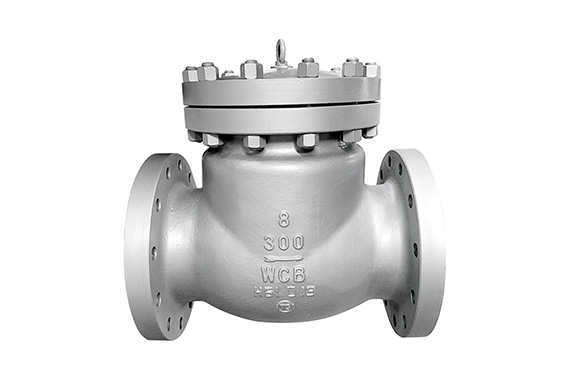
This type of valve is mainly used to control the backflow of the fluid in the piping system. They limit the flow of media in a piping system to one direction. Due to its uni-directional movement, the check valves are also known as the non-return valve. This broadly defined check valve function has different functions in various industries. It mainly opens due to the pressure exerted by the fluid flow and closes when there is a reverse flow of liquid.
The fluid can flow through these valves hassle-free. Moreover, it closes automatically as soon as the pressure decreases. The check valve mainly consists of the seat ring, cover, body, disc, and hinge pin. Moreover, these types of valves are classified based on their types of disc.
Types of Check Valves
The different types of check valves have been given below.
- Dual plate type
- Swing type: Top Hinge and Tilting disc
- Stop check valve
- Lift type- Ball type and Piston Type
Advantages of Check Valve
- It plays a major role in preventing the backflow of the fluid.
- There is an efficient pressure maintenance
- The check valve can serve as an appropriate backup system for the pipelines.
Disadvantages of Check Valve
- It does not work appropriately with the pulsating systems
- It might often damage the pipeline. .
Applications of Check Valve
To avoid backflow and maintain pressure, check valves are utilized. They are frequently employed in three situations: as a backup in case, a pump fails, to support the operation of reciprocating pumps and compressors, and when the system pressure is greater than the primary equipment’s capacity.
Oilfield production, water, steam, petrochemical, chemical, and other industries, as well as the refining and petrochemical, chemical, and viscous fluids sectors, all use check valves. In waste-water management systems and industry, check valves are the most common.
Why can they be used in the pipeline?
These valves prevent the backflow of any unwanted fluid through the piping systems. Working in just one direction these valves would allow the fluid to flow in a single direction. However, if the flow takes a turn, the check valve immediately closes to protect the entire piping system.
4. Plug valve
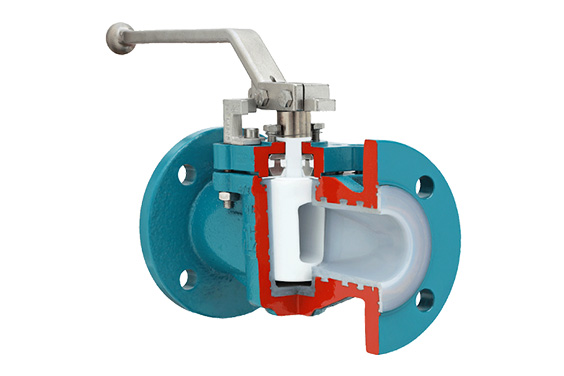
Considered the quarter turn valve, it utilizes a cylinder-shaped plug to restrict or begin the fluid flow. The disc present in these valves is plug-shaped with a passage to allow a smooth flow. The movement of the plug at a perpendicular angle opens or shuts off the valves. It is mainly used in pipeline systems that require instant or quick operations. Furthermore, it can also bear high pressure and temperature.
Types of Plug Valves
There are different types of plug valves used for distinct purposes. The four main types have been mentioned below.
- Lubricated Plug Valves
- Non-lubricated Plug Valves
- Eccentric Plug Valve, and
- Expanding Plug Valve
Advantages of plug valve
- It has a simple design and fewer parts
- The plug valve can be quickly opened or closed.
- This valve offers minimal resistance to flow.
- The use of multi-port designs helps in reducing the number of valves needed and permits a change in the flow direction.
- It provides a reliable leak-tight service.
- They are easy to clean and can be done without removing the body from the piping system.
Disadvantages of plug valve
- As a large amount of friction is required to rotate the plug, a greater force is required to operate these valves.
- Actuators are required for larger valves.
- The plug valves cost more than ball valves which have a similar design.
- There are higher chances of pressure drop due to reducing port.
Applications of plug valves
The employment of plug valves with corrosive hazardous liquids and gases is better suited to their effectiveness These valves have numerous applications some of them include: Oil piping systems, Supplying chemicals, Systems for flows at high pressures and high temperatures, and many more.
Why can they be used in the pipeline?
The plug valves can handle the high pressure and temperature safely. Thus it can protect the piping systems against damage due to pressure or temperature conditions. Furthermore, these valves can efficiently regulate the fluid flow even the ones containing slurry elements.
5. Ball valve

A ball valve is a quarter-turning valve that uses a ball-shaped component to regulate or prevent fluid flow. When the ball is static in its position, it signifies the opening of the valve allowing unobstructed flow. Contrary to this, when it rotates in a 90-degree position the ball stops the flow.
Most of these valves can be operated instantly, however, the one with larger sizes require an actuator to function. A small handwheel can simply help in the rotary motions in the valve.
Types of Ball Valve
The different types of ball valve used in the piping system has been given below.
- Three way
- Top entry
- Split body
- Three-piece body
- Floating
- Trunnion Mounted
Advantages of Ball Valve
- They are inexpensive and has low maintenance
- The ball valves have a higher flow rate
- It has the capacity to withstand high pressure and temperatures
- Provides minimum leakage
- Can be automated as well as operated simply.
Disadvantages of Ball Valve
- They do not have efficient throttling properties.
- Not a better choice for slurry applications due to the presence of space between the seat and the ball.
Applications Of Ball Valve
The ball valves have distinct applications which include systems for cooling and feeding water, low-point drains, device root valves, steam services, and many more.
Why can they be used in the pipeline?
They are the most reliable choice when it comes to selecting valves for the pipeline. This is because these valves can withstand any temperature or pressure conditions and protect the pipe from damage. Moreover, not much force is required to automate these valves. It can be done instantly and in a cost-effective manner. In the pipelines, they can isolate the fluid from the mainstream piping system.
6. Butterfly Valve

A butterfly valve, like a ball valve, operates using a half-turn mechanism. To open or close the valve, a series of centrally located flaps are used. The valve handle is connected to the stem, which is connected to the disc inside the valve. The handle’s movement causes the disc to rotate and open or close the valve. This type of valve is further classified as double eccentric, concentric, and triple eccentric.
The flow control element in a butterfly valve in pipeline is a disc that rotates on either a vertical or horizontal axis and is roughly the same diameter as the inside diameter of the adjoining pipe.
Types of Butterfly Valve
- Double eccentric butterfly valve
- Metal seal butterfly valve
- Bronze butterfly valve
- Resilient Seated Butterfly Valve
- Tripple eccentric butterfly valve
- Stainless Steel Butterfly Valve
- Cryogenic Butterfly Valve
- High-Performance Butterfly Valve
- Cast Iron Butterfly Valve
- Lug-style butterfly valve
Advantages of Butterfly Valve
- Pipleline Butterfly valves are useful for handling slurries or liquids with a high concentration of suspended solids. Hence, they make a great choice for pipeline systems.
- Butterfly valves are ideal for handling large fluid flows of liquids or gases at relatively low pressures.
- There are no small gaps or pockets where fluid can become trapped.
Disadvantages of Butterfly Valve
- Butterfly valves require a lot of torque to be controlled.
- Although butterfly valves can handle slurries, their capacity is limited.
Applications Of Butterfly Valve
Butterfly valves have a wide range of applications. compressed air and gas, wastewater treatment, Water supply, vacuum services, fuel handling systems, slurry services, chemical industries, air and gas supply, power generation, fire protection, lubrication system, are some typical applications of butterfly valves.
Applications Of Pipeline Valves

The distinct applications of the pipeline valves in different industries have been given below.
Oil Pipeline
A variety of fluids flow through the pipeline in the oil industry. Thus, different types of pipeline valves are required at different stages of processing and production. While some utilize the valves that allow even the slurry objects in the fluid to pass through, others need it for regulating purposes.
Gas Pipeline
The pipeline valves in the water pipeline are used to regulate or throttle the fluid flow. It can direct, shut off or restrict the flow of liquid within the water piping systems. Ball valves are the most commonly used valves in water pipeline systems.
Water Pipeline
The pipeline valves in the water pipeline are used to regulate or throttle the fluid flow. It can direct, shut off or restrict the flow of liquid within the water piping systems. Ball valves are the most commonly used valves in water pipeline systems.
Factors To Consider When Selecting Valve For Pipeline
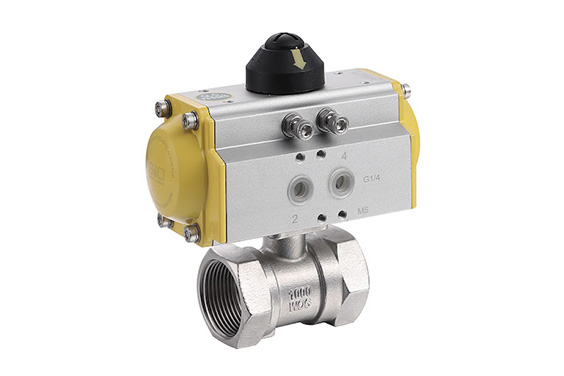
There are several factors to be considered before selecting a valve for the pipeline. Some of the significant factors influencing the selection of the pipeline valves have been mentioned below.
Material of the Valve
The material of the valves is determined by the type of media passing through it gas or liquid. However, it is significant to use durable and corrosive-resistant materials for the pipeline valves. For instance, when dealing with corrosive substances, PTFE (polytetrafluoroethylene) or PFA (perfluoroalkoxy alkanes) can be considered an appropriate choice.
Application of the Valve
It is significant to select an appropriate size of the valve based on its application. Analyze the purpose for which the valve is being used such as pressure control, temperature, flow rate or other operations.
Function of the Valve
It is important to determine the main function of the valves. Select the two way valve if only a controlling mechanism is required. For diverting the fluid flow, a three way valve is the best option. There are different types of valves available, choose the one that best suits the necessary functions.
Contact Professional Pipeline Valves Manufacturers - SIO
One of the leading China pipeline valves manufacturers SIO, has been in the industrial valve manufacturing industry for a decade. They are well known for supplying and producing high-quality valves for different industrial purposes to importers, project supervisors, and distributors. Moreover, they also customize the valve manufacturing for pipeline as per the requirements and applications.

